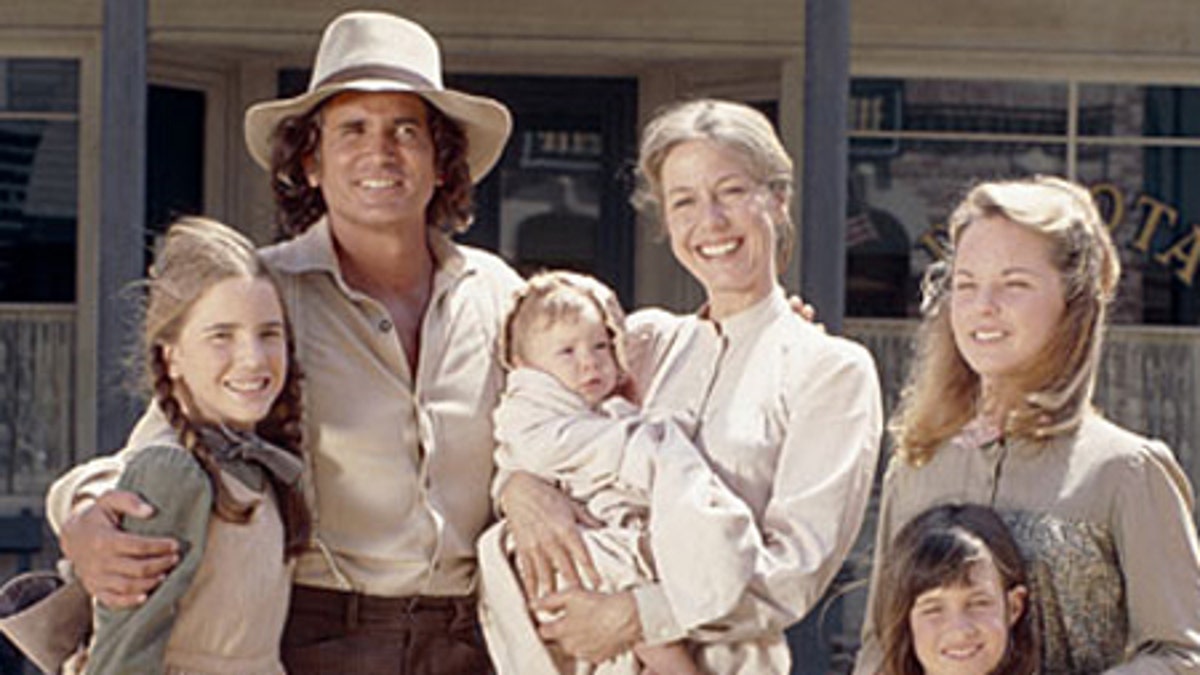
Little House on Prairie, NBC (1974-1983). ( )
In 1931, a Missouri farm woman sat down with pencil and lined paper to write her life story. She was Laura Ingalls Wilder, locally famous for her gingerbread and hospitality. When "Little House in the Big Woods" appeared, the 65-year-old was instantly famous in schools, libraries and homes. She still is.
Today, Wilder's renown is scarcely equaled by any other American author. The nine "Little House" books, chronicling life on the American heartland, still resonate. The adventures of the Ingalls family, as they forged west in the 1870s and 1880s, perennially enchant and instruct readers.
Wilder had a story to tell. "I understood that in my own life I represented a whole era of American history," she mused. Indeed. Her covered wagon treks, provided rich memories of building towns and family farms on the frontier. There were hardships --crop failures, fires, illness, weather and skimpy rations. But Wilder's family endured with grit, determination and unity. Their family security was unshakable.

"I wanted the children now to understand what made America," Wilder told an audience in 1937. "It seemed to me that my childhood had been much richer…than that of children today. Children clamored for more stories." Wilder's publisher, Harper Collins, urged her on; she finished her series at age 76. The saga concluded with her 1885 marriage to Almanzo Wilder, whose story she told in "Farmer Boy."
In 1894 the Wilders, with their only child Rose, settled on Rocky Ridge Farm in Mansfield, Missouri. Again they struggled against the elements, establishing a farm and building their home. Almanzo and Laura took pride in their work ethic. "It was a good and pleasant life," Wilder declared: "What we accomplished was without help from anyone." She infused her Little House stories with subtexts of self-responsibility and hard work, calling them "homely virtues."
Generations of children responded to the Wilder way of life. Teachers read the books aloud in classrooms, augmenting them with learning activities. During Wilder's lifetime--she died at 90, in 1957--she received thousands of fan letters. She responded to all, writing in precise longhand. Reader comments warmed her heart. "I could read your books a thousand times," one letter began. Another child said: "Your story helps us to understand life many years ago." A teacher confided: "The children call you Laura, as if you were their dearest friend." A dad wrote: "'Little House in the Big Woods' contributed to our family dream to have our own log cabin."
Wilder's genius as a storyteller included meticulous descriptions of pioneer ingenuity. She explained how log cabins were built, how horses were trained; she described growing and gleaning of crops, hunting, trapping, and frontier homemaking. In "The Long Winter" Wilder wrote of twisting hay for fuel and grinding wheat for daily bread. "Little House on the Prairie" told of digging a well, building a door, plowing up the prairie and rounding up cattle.
Twenty-first century children remain engrossed by such explanations. Homeschoolers adopted the Little House books as curriculum rite of passage. Readers flock to the book sites in Wisconsin, Minnesota, Kansas, South Dakota, Iowa and New York State. Wilder's home in Mansfield, Missouri is the epicenter; most of her family's possessions are there. A new museum opened there this week.
Would Laura Ingalls Wilder be amazed at her continuing popularity? Probably not. She had an unflinching faith in America. In a message to her young readers, she said: "As long as Americans are free, they will never cease to make our country ever more wonderful."
